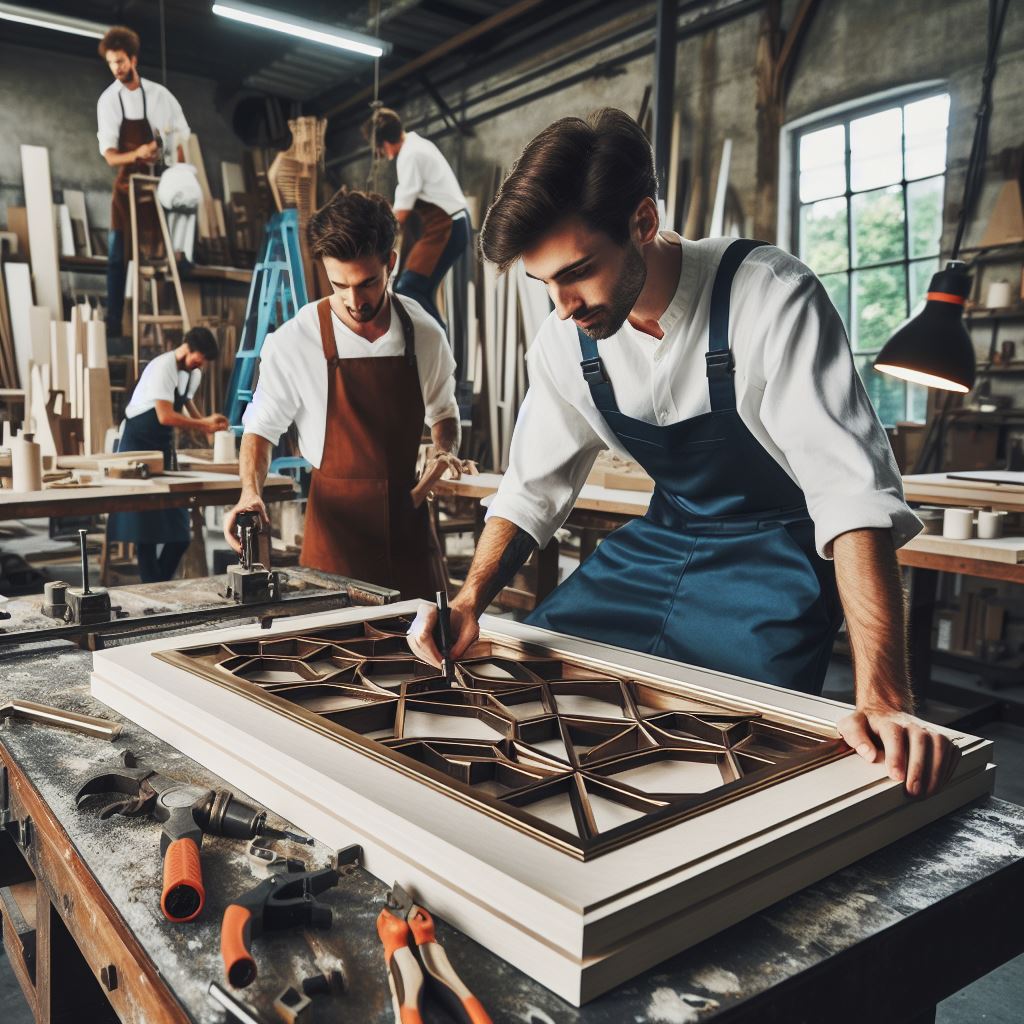Essential Art Installation CAD Block Resources!
When it comes to planning and visualizing art installations, precision and detail are paramount. This is where Art Installation CAD Blocks come into the equation, serving as invaluable tools for architects, designers, and art handlers alike. These digital resources provide a comprehensive visual representation of various art pieces, allowing for meticulous planning and placement within a given space. By leveraging CAD (Computer-Aided Design) technology, professionals can create detailed layouts, ensuring that every piece of art is accounted for and appropriately positioned to achieve the desired aesthetic impact.
For those looking to enhance their project’s visual planning, exploring essential art installation CAD blocks is a crucial step. These resources streamline the design process, facilitating an efficient setup and allowing one to anticipate and address potential installation challenges beforehand. They provide a clear roadmap for installation teams, like those at TYart, who bring over two decades of experience to the table in art handling and installation.
Need Help With Your Corporate Art Installation? TYart is here to help. With a proven track record in the Houston area, our seasoned professionals understand the importance of careful handling and the profound impact that a well-executed art installation can have. If you have any questions about art services in Houston, please don’t hesitate to reach out to us today at tyart.com or call us at 713.869.4044.
The Importance of CAD Blocks in Art Installation

The integration of CAD blocks in art installation cannot be overstated in the realm of exhibition design and gallery planning. These digital blueprints offer a bird’s-eye view of the spatial relationship between the artwork and its surroundings, which is critical in creating harmonious and impactful displays. The use of CAD blocks allows for the precise scaling of art pieces, ensuring that they fit perfectly within the allocated space, and conform to the necessary safety and accessibility standards.
Art installation CAD blocks also significantly aid in the communication process among various stakeholders involved in an art project. This includes artists, curators, architects, and installation teams, who all need to be on the same page regarding the layout and vision of the exhibition. By providing a shared reference, CAD blocks minimize misunderstandings and reduce the risk of costly errors during the actual installation process.
Moreover, CAD blocks serve as an essential component in the preservation of art. By planning the placement and support structures through CAD, professionals can avoid potential damage caused by environmental factors or human interaction. This foresight is especially crucial for delicate or valuable pieces that require a controlled environment. CAD blocks, therefore, play a vital role not only in the presentation of art but also in its long-term conservation.
Top Sources for Art Installation CAD Blocks
For professionals and enthusiasts in the field of art installation, sourcing the right CAD blocks is a crucial step in the planning process. High-quality CAD blocks can be found through a variety of online platforms that cater to architects, designers, and art installers. Some of the most reputable sources include:
- CADdetails: A comprehensive resource for manufacturer-specific CAD blocks, perfect for those needing precise details for art installation fixtures and fittings.
- Bibliocad: Offering a vast library of CAD blocks, this platform is ideal for finding generic and specialized art installation designs.
- AutoCAD Blocks: As the name suggests, this resource is perfect for users of AutoCAD software, providing a wide range of art installation-related blocks.
- ArchBlocks: This premium service offers high-quality, professionally designed CAD blocks that are specifically tailored for art installations, providing an edge in both efficiency and aesthetics.
These sources offer a diverse selection of CAD blocks that cater to various styles and scales of art installations. From contemporary sculptures to classic paintings, these platforms provide the necessary tools to envision and execute a precise and effective art display. Additionally, many of these sites also offer the option to request custom CAD blocks, ensuring that even the most unique installation requirements can be met.
Utilizing these top sources for art installation CAD blocks enables a smoother workflow and provides a reliable foundation for creating a successful and visually compelling art exhibit.
Incorporating CAD Blocks into Your Project Plan

Once you have sourced the appropriate art installation CAD blocks, the next step is to incorporate them into your project plan effectively. This integration is pivotal to visualizing the final outcome and ensuring that all elements of the art installation harmonize with the surrounding space. To achieve this, follow these best practices:
- Scale Accuracy: Ensure that the CAD blocks are scaled correctly to match the dimensions of the physical space. This will prevent sizing issues during the actual installation.
- Layout Configuration: Experiment with different configurations of CAD blocks within your project plan. This helps in identifying the optimal placement of artworks, considering factors such as lighting, sight lines, and traffic flow within the space.
- Collaboration: Share the CAD-based project plan with all stakeholders, including artists, curators, and installers. This promotes a collaborative approach and allows for input and adjustments from different perspectives.
- 3D Visualization: If possible, utilize 3D CAD models to get a more comprehensive understanding of how the art pieces will interact with the environment. This extra dimension can be particularly helpful for complex installations or when communicating ideas to clients who may not be familiar with reading 2D plans.
By meticulously integrating CAD blocks into your project plan, you can anticipate challenges and make informed decisions throughout the art installation process. This level of preparation not only elevates the precision of the installation but also enhances the overall aesthetic and impact of the display, ensuring a successful and engaging art experience for viewers.
Tips for Selecting the Right CAD Blocks for Art Installations

Selecting the right CAD blocks for art installations is not just about finding a representation of the artwork. It’s about ensuring compatibility with the project’s aesthetic, functional, and technical requirements. Here are some tips to help you choose the most suitable CAD blocks for your art installation:
- Detailed Representation: Look for CAD blocks that offer a detailed and accurate representation of the actual artworks. This includes correct dimensions, shapes, and even textures that can affect the visual and spatial harmony within the installation area.
- Compatibility: Ensure that the CAD blocks you select are compatible with the software you are using. This prevents technical issues that could arise from file format mismatches and saves time in the planning phase.
- Customizability: Sometimes, you might not find the exact CAD block you need. In such cases, opt for blocks that can be easily modified or customized to fit the specific requirements of your art installation.
- Relevance: The CAD blocks should be relevant to the type of art installation you’re planning. For example, if you are working on a sculpture garden, the blocks should reflect the three-dimensional nature of the pieces and the outdoor setting they will be placed in.
- Source Reliability: Acquire CAD blocks from reputable sources to ensure their quality and accuracy. This is crucial as the precision of these blocks can significantly impact the planning and execution of the installation.
By meticulously selecting the appropriate CAD blocks, you can streamline the design and installation process, ensuring that all elements work together to create the intended artistic vision. With the right resources at your disposal, you can enhance the efficiency and effectiveness of your art installation projects.
Maximizing Efficiency with Art Installation CAD Resources

Maximizing efficiency in art installations is paramount, especially when dealing with intricate designs or large-scale projects. Leveraging art installation CAD resources can significantly aid in this process. CAD software enables precise planning and visualization, allowing for the adjustment of components in a virtual space before physical labor begins. It also facilitates effective communication among team members, ensuring everyone understands the installation’s requirements.
Efficiency can also be elevated by maintaining an organized library of CAD blocks. By having a categorized and easily accessible system, you can quickly locate the necessary blocks, reducing the time spent searching for the right resources. Additionally, consider using CAD blocks that have been specifically designed for art installations, as these will often include specialized elements that are commonly used in the field.
When complexities arise, such as the need to install heavy or delicate artwork, or to suspend large sculptures, the precision of CAD planning becomes invaluable. It allows art handlers to anticipate and solve potential problems before they occur. If you’re facing such challenges and need professional assistance, TyArt is here to help.
With over 21 years of experience in Corporate Art installations in the Houston area, our team has the expertise to ensure that your art is installed safely and successfully. For inquiries or to schedule a consultation, visit our website or call us at 713.869.4044. Our dedicated art professionals are ready to bring your vision to life with the utmost care and precision.


